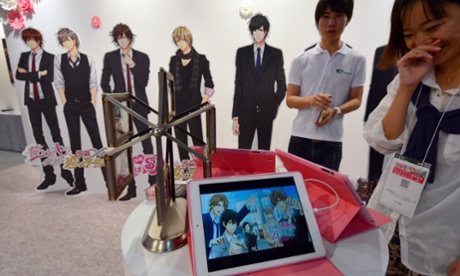
This is the second part of Cara Ellison’s look at the Japanese indie games scene. In part one, she visited Tokyo Indies, a get-together where lone developers and small studios can show off their latest projects.
What is “indie”? What do we mean, when we talk about indie game development? It’s something developers and writers in the west have pondered on a lot lately, as the nature and business of game development evolves.
In Japan, too, the demarcations between development types and identifying labels have become arbitrary and unclear. For example, The Touhou Project, a series of “bullet hell” scrolling shoot-’em-ups by one-man outfit, Team Shanghai Alice, is considered a successful dōjin game series – in other words, a hobbyist development project. However, people refer to the Japanese-developed Cave Story – a clear homage to Nintendo’s Metroid titles by lone developer Daisuke Amaya – as indie.
“Now why is that?” asks Alvin Phu, game developer and organiser of the regular Tokyo Indies gatherings. “I can’t really answer these questions. I am not Japanese.”
Instead, I ask independent developers Makoto Goto and Mika Maruyama what they think.
“It’s difficult to give an explanation because the perspective is different,” Goto says. “Almost always, the dōjin creator has a daytime job and their hobby is making dōjin games. But with indie games, the importance is on making money.”
Maruyama expands a little on what she thinks the indie philosophy is: she tells me that dōjin creators take their inspiration from manga and anime that they admire, but indie games are more often a reflection of something more centred inside the creator.
Maruyama’s website, for example, is a showcase of her original artwork and enchanting music, the sort that excites me about her forthcoming first game, as yet unnamed, which I hope will be the crossroads of all her many talents.
“Indie games are based on the self,” Goto says. “They are different in that manner.”
Goto thinks that the Tokyo Game Show didn’t really care about indie game makers until this year when the media became interested in them. There has also been a change of environment surrounding developers Goto says, with Valve’s Steam platform and start ups making a big difference.
In 2009, heavyweight Japanese developer Keiji Inafune, the “father” of Capcom’s legendary platform gaming series Megaman, made a famous remark. “Personally when I looked around [at] all the different games at the TGS floor I said ‘Man, Japan is over. We’re done. Our game industry is finished.’”
Though he teaches game design and speaks regularly on games in Japan, Inafune has reinforced this opinion of the Japanese games industry since, saying there are too many sequels on the TGS floor. But I wonder if he might have been excited this year by the number of original Japanese indie games at TGS, including the intriguing Vane, developed by ex-members of Team Ico, the creators of Ico, Shadow of the Colossus and the long-awaited, Last Guardian. Onion Games’ Million Onion Hotel, a brilliantly funny puzzle game studded with Yoshiro Kimura’s poetry, was also a highlight of the indie booths. I think Inafune would love Downwell too.
“It’s such an exciting inspiration,” Goto says on the rise of the Japanese indies. He thinks all kinds of game makers in Japan will take full advantage of the opportunities provided by the rise of the indie community, and that it’s possible the dōjin community will also benefit from this new emphasis on small budget developers. Patel hopes that Japanese student game makers will take over running Kyoto Indies and invite new people into the fold. There’s a sense here that Japanese developers are taking ownership of their future; they are becoming less afraid of the risks of going it alone.
“The spirit of indie game makers and dōjin game makers is the same,” Goto says. “We can make our own games.”
Six interesting Japanese indie games to try today
1. Recettear: a dōjin role-playing adventure, translated into English and available on PC.
2. La Mulana: critially acclaimed “metroidvania”-style exploration platformer. It’s available on PC and Wiiware and a Vita version is planned.
3. Shipponeko and the Disappearing Fried Shrimp: completely loveable flash game in which you control a cat looking for dinner and avoiding feline enemies.
4. Cherry Tree High Comedy Club: A charming and funny high school adventure, available on Steam.
5. Hatoful Boyfriend: And in a similar style, this is a high school dating game, but with pigeons instead of boys.
6. Astebreed: visually gorgeous hardcore sci-fi “schmup” from Edelweiss, available in an English translation on Steam.

